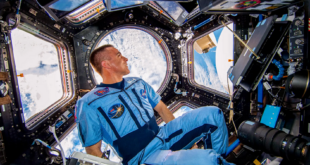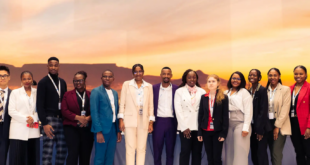By Viktoria Urban

Our Space Café WebTalk “33 minutes with Jennifer Manner – The Critical Role of Satellite Networks in 5G and Beyond Ecosystems” took place on Tuesday, 14th June.
Our guest was Jennifer A. Manner, a Senior Vice President of Regulatory Affairs at EchoStar Corporation/Hughes Network Systems where she is responsible for the company’s domestic and international regulatory and policy issues, including spectrum management, new technologies and market access.
Prior to this, she has held senior positions in the U.S. Government including Deputy Chief of the Office of Engineering and Technology and before that Deputy Chief of the FCC’s Public Safety and Homeland Security Bureau, as well as Senior Counsel to the FCC Commissioner and in a range of U.S. telecommunications companies. Jennifer is widely published on telecommunications issues, as well as being an award-winning documentary film producer. Her latest film, When Wire Was King: The Transformation of Telecommunications is scheduled to be released this year.
Jennifer’s film career started with a dinner at a wedding with a senior member of the telecommunications industry, who told her his history in telecoms. When she joined telecommunications in the early 90s, there were hardly any DSOs (Distribution System Operators), and phone companies still had monopoly around the world. She wanted to capture this and after ending up as a finalist at the Cannes Film Festival with her first documentary on zebrafish, she gained the confidence to do a full length documentary on the subject. The film investigates the creation of competition in the telecoms industry in the U.S. and it focuses quite heavily on a period in the 1970s.
Jennifer thinks that there came a change along with 4G, as the industry recognised the importance of user experience. She claims that most users are not concerned about how they get their service, they just want good, reliable communications.
“You’ve got to have some sort of standard-based approach for all the technologies.”
She explains how 3GPP set global standards for 3G so that the networks around the world would all be able to interconnect. The standards also cover certain frequency bands and the satellite industry has been working to comply with these. Of course, there have been new standards released since then, and the ITU (International Telecommunication Union) also has a function of putting spectrum identifying guideposts for IMT (International Mobile Telephony).
Jennifer adds that the ITU has three sectors: radio communications (focusing on spectrum), telecommunications (standard oriented), and the development sector, which is where developing countries are educated about technologies and services. The latter provides a unique opportunity to help the developing world get connected in an intelligent way.
She clarifies that the aim of 6G in the future is to move from the Internet of Things to an Internet of Senses. While 5G is connecting everyone and everything, 6G is looking at how the end users sense things. This requires not just knowing, not just connecting things, but picking up the environment and the people. This requires much higher frequency bands – terahertz bands.
“There has to be a change in mindset in the satellite industry.”
She thinks there will be an economic driver to further include the use of satellites, to directly connect cell phones with satellites with the help of a chipset.
Jennifer sees the future in a hybrid solution. She says that GEO (geostationary Earth orbit) still provides very good, low cost, high capacity services. LEOs (low Earth orbits) have low latency, while MEOs (medium Earth orbits) again have different characteristics. The future hybrid system will utilize all of these to enable using the satellite connectivity in areas where there is otherwise not a lot of coverage. Fiber, cellular, fixed wireless, and satellite services could all be used depending on customer demand.
“That’s where the standards bodies are so important, because you need this all to work together.”
To listen to the Space Café WebTalk’s insights, you can watch the full program here:
Viktoria Urban, contributing Editor at SpaceWatch.Global: After graduating as a Journalist from Edinburgh Napier University, I am now doing an Astronomy and Planetary Science degree at The Open University (Scotland) which has enhanced my already existing love and enthusiasm for space. I am also a member of and a volunteer for several societies both in Hungary and in the UK and write online content on space for multiple companies as well. I hope my science communication will encourage many to find a job in the space sector, whatever their background and highlight important issues to ensure a sustainable space environment for future generations.
 SpaceWatch.Global An independent perspective on space
SpaceWatch.Global An independent perspective on space




